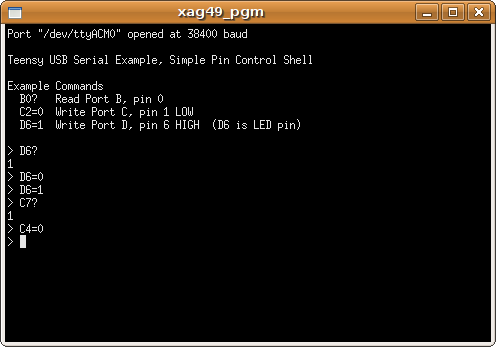
- #Usb block 1.5.1 serial key how to#
- #Usb block 1.5.1 serial key install#
- #Usb block 1.5.1 serial key drivers#
- #Usb block 1.5.1 serial key code#
That entry can be added in one of two ways: "0x00000000": Enters selective suspend only when there are no open handles to the device. "0x00000001": Enters selective suspend when idle, that is, when there are no active data transfers to or from the device. To configure power management features of Usbser.sys, you can set IdleUsbSelectiveSuspendPolicy to:
The feature is disabled by default and can be enabled and configured by setting the IdleUsbSelectiveSuspendPolicy entry under this registry key: HKEY\_LOCAL\_MACHINE\\SYSTEM\\CurrentControlSet\\Enum\\USB\\
When communication with the device resumes, the device can leave the suspend state and resume the working state. It allows the attached USB-to-serial device to enter a low power state when not in use, while the system remains in the S0 state. Starting in Windows 10, Usbser.sys supports USB Selective Suspend. Configure selective suspend for Usbser.sys
#Usb block 1.5.1 serial key how to#
ĪddService=usbser, 0x00000000, LowerFilter_Service_Instįor more information, see How to use or reference the Usbser.sys driver from universal serial bus (USB) modem. for details, see System-Supplied Device Setup Classes. Under the Version section of the INF, specify the Modem and the device class GUID. The INF also needs to specify the device setup class as Modem to use mdmcpq.inf. That INF specifies "Usbser" as a lower filter driver in a device stack. The directive is required for instantiating the service, copying inbox binaries, and registering a device interface GUID that applications require to find the device and talk to it. To load the driver, you need to write an INF that references the modem INF ( mdmcpq.inf) by using the Include directive. In Windows 8.1 and earlier versions of the operating system, Usbser.sys is not automatically loaded when a USB-to-serial device is attached to a computer. With the new in-box INF, Usbser.sys is automatically loaded if a USB-to-serial device is detected on the mobile device. Unlike desktop editions, it is not possible to load a driver through an external driver package.
#Usb block 1.5.1 serial key drivers#
On mobile editions of Windows, such as Windows 10 Mobile, only drivers that are part of the operating system are loaded. Microsoft encourages you to use in-box drivers whenever possible. For information about INF sections, see Overview of INF Files. For examples, look through the INF files included with sample drivers and find devices similar to your device. If your device specifies class and subclass codes to 02, and you want to load another driver instead of Usbser.sys, you have to write an INF that specifies the hardware ID of the device and the driver to install.In this case, you might have to load your own driver or write an INF that references another in-box driver.

If a suitable driver is not found, the device might not have a driver loaded. The Plug and Play manager tries to find a driver.

#Usb block 1.5.1 serial key code#

Starting in Windows 10, Usbser.inf was added to the %Systemroot%\INF directory, which loads Usbser.sys as the functional device object (FDO) in the device stack. For the list of USB device class driver included in Windows, see USB device class drivers included in Windows. If they are not installed automatically, contact the device manufacturer.
#Usb block 1.5.1 serial key install#
If you trying to install a USB device class driver included in Windows, you do not need to download the driver.


 0 kommentar(er)
0 kommentar(er)
